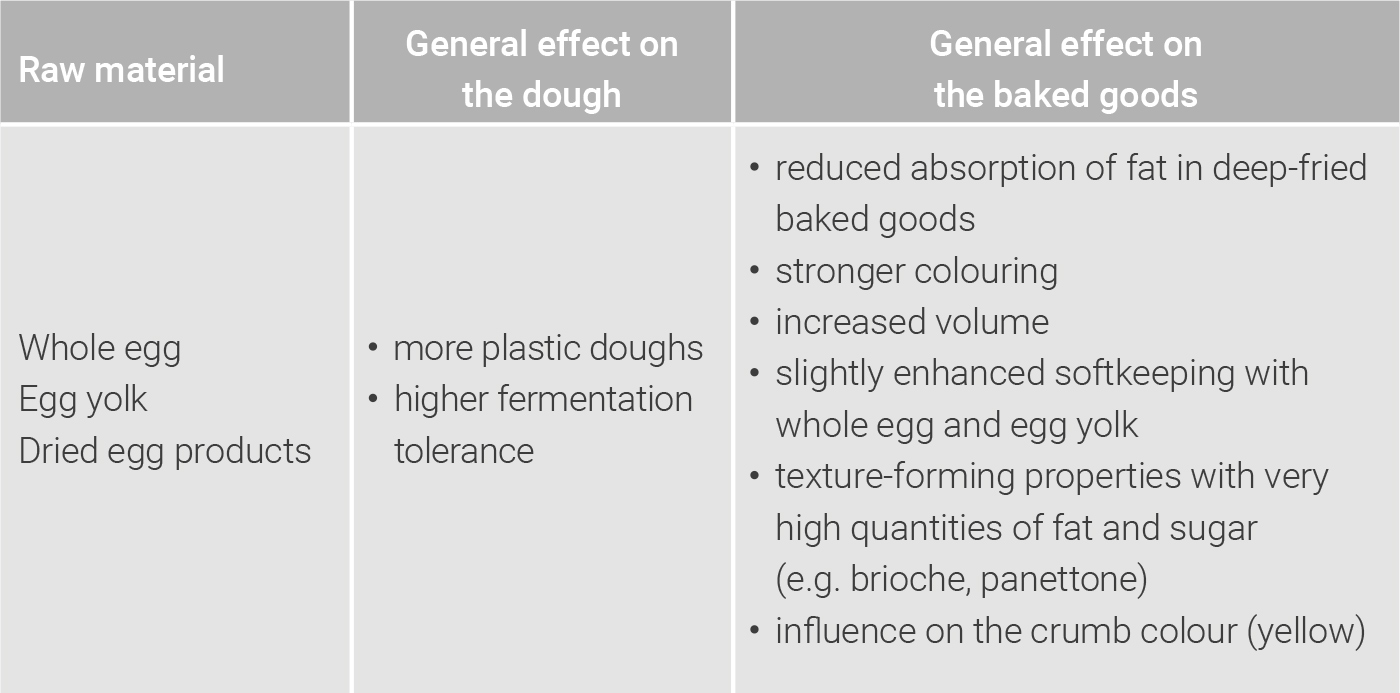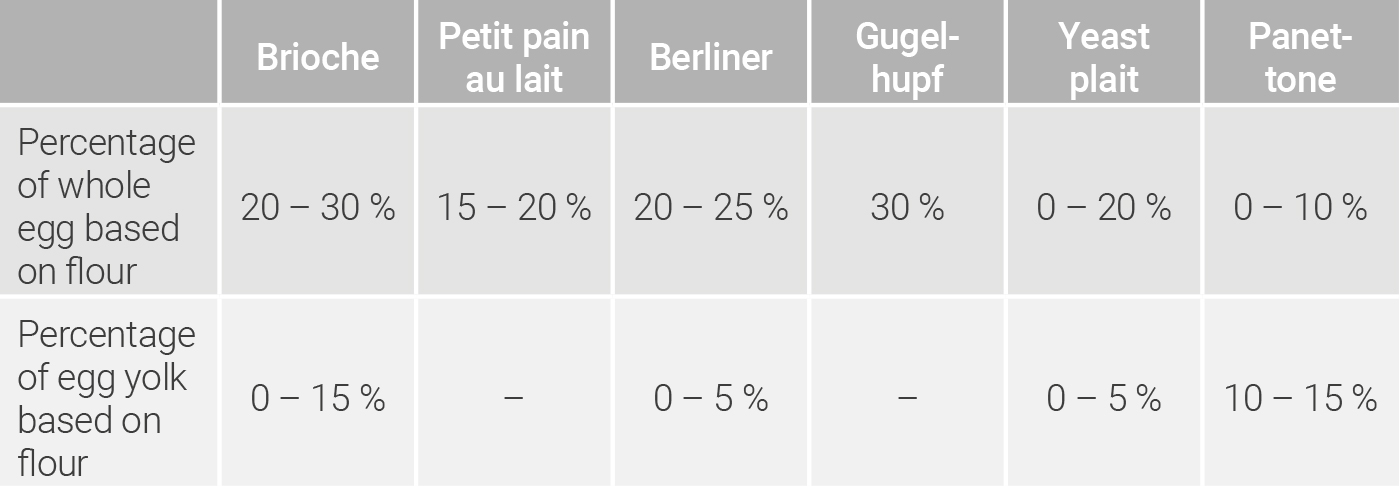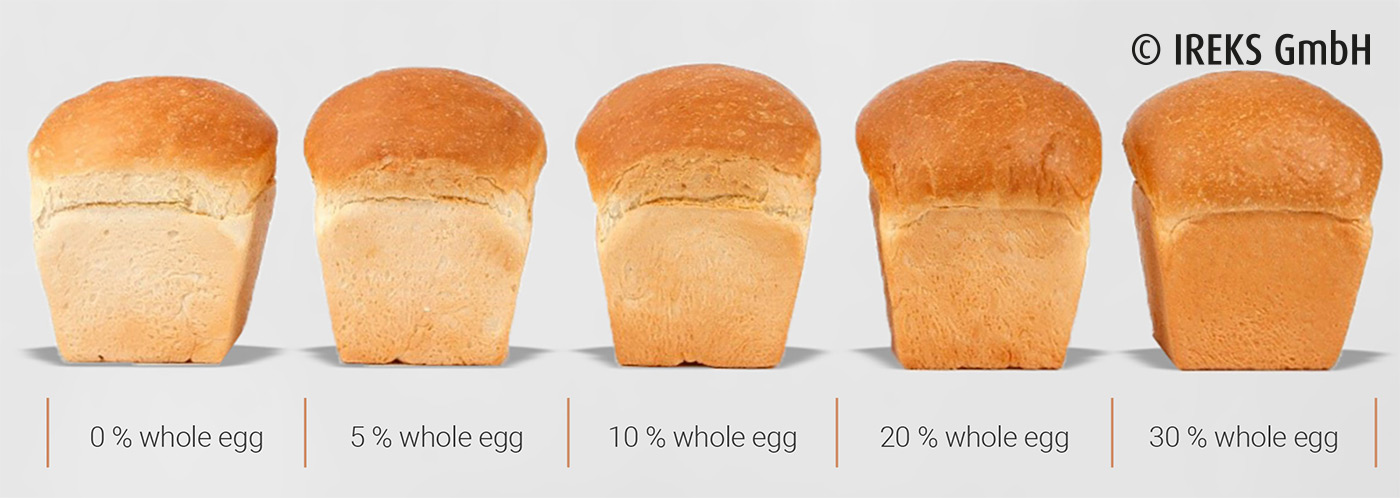The use of egg and dried egg products in confectionery yeast doughs has a long tradition. These improve the taste, the texture and the colour of the baked goods. From a consumer point of view, the value of the baked goods is increased.
Over and above the properties adding value, use is made of the technological effects of the addition of egg. The percentage of protein of whole egg stabilizes the crumb of the baked goods, especially in the case of high fat and sugar quantities.
Moreover, the fats and the lecithin contained in the egg yolk have an emulsifying effect. As a result, the dough properties are improved and higher volumes of baked goods and a finer crumb texture can be achieved.
For the production of panettone, brioche baked goods, Berliners or gugelhupf, the percentage of whole egg is decisive for the quality of the baked goods. As the important fat and lecithin percentage is only to be found in the egg yolk, a percentage of egg yolk is frequently used in addition to whole egg.
By the addition of egg yolk, the crumb texture and the crumb colour, but also the softkeeping of the baked goods, are improved. The use of egg white alone is not recommended. The percentage of protein of the egg white does support the crumb formation, but tends to lead to a dry and straw-like baked goods crumb.
Table 10.6: Common percentages of egg products for various baked goods from confectionery yeast doughs
Instead of fresh egg products, dried egg products can also be used for confectionery baked goods. The following quantity information can be used for the calculation.





